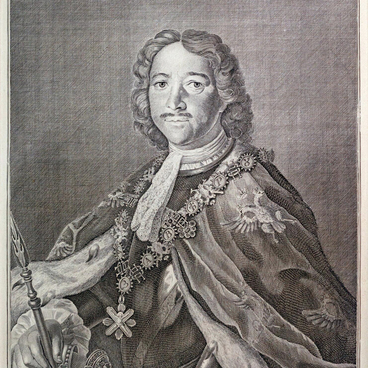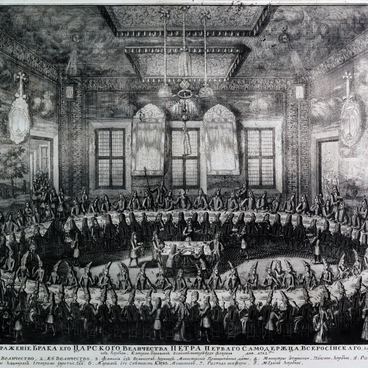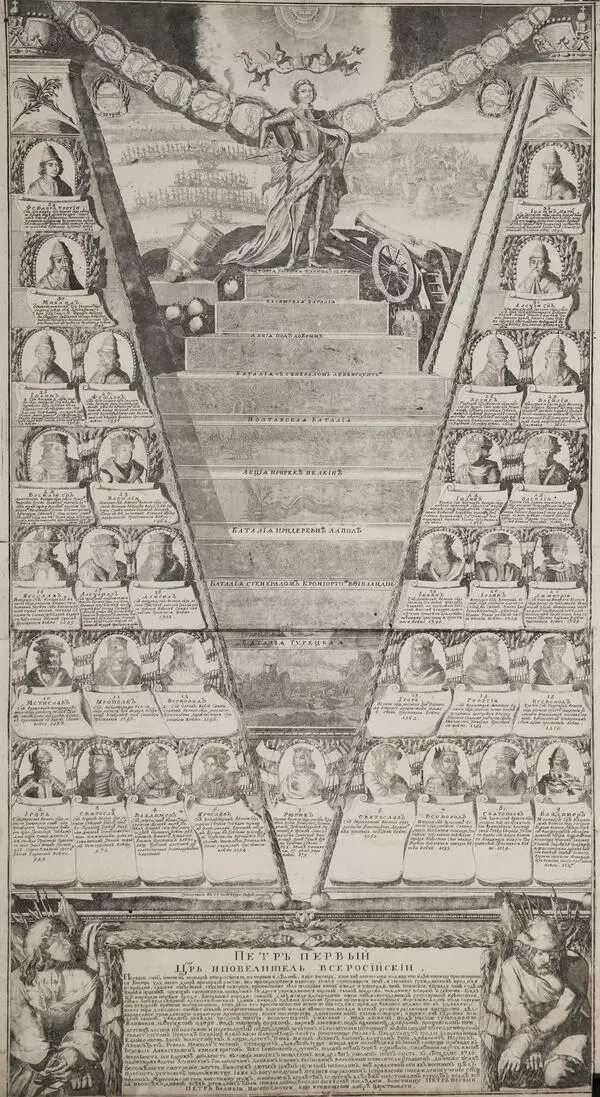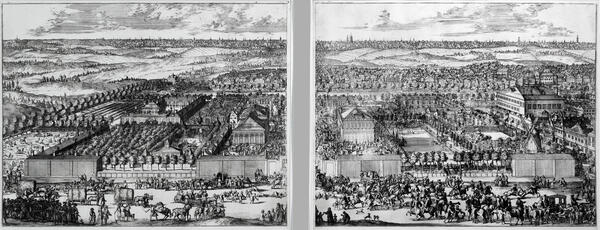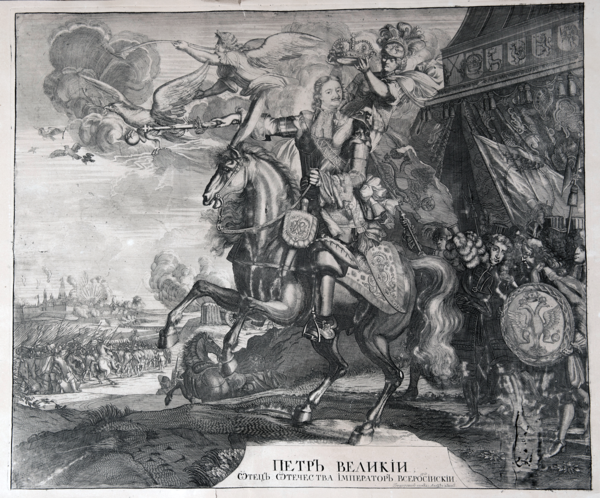The exhibition of the Irbit State Fine Arts Museum features an engraving by Pieter Pickaert titled “The Entry of the Persian Embassy into Moscow on December 3, 1712”.
Pieter Pickaert was invited to Russia and arrived in 1702. Almost immediately, he joined the traveling engraving workshop of the active army. During the Great Northern War (1700–1721), the workshop worked “day and night” creating maps, battle plans, battles scenes, and images of victorious fireworks. These artworks were distributed within the army, sold in Moscow and other cities, hung on streets, and sent abroad as presents by Peter I. Pieter Pickaert worked in almost all genres of printmaking that existed during the reign of Peter the Great. Mostly, he specialized in engraving and etching. He created the first famous view of St. Petersburg under construction (1704), panoramic landscapes, and battle scenes (including “The Battle of Poltava”). As a talented portraitist, he also created equestrian portraits of Peter I and Alexander Menshikov. He participated in working on engravings for “The Book of Mars” about the battles of the Great Northern War, the first book printed in St. Petersburg. Together with Alexey Fyodorovich Zubov, he also engraved a large map of Europe (1720–1721). His last work created before going blind was “The View of the Alexander Nevsky Monastery” (1723).

